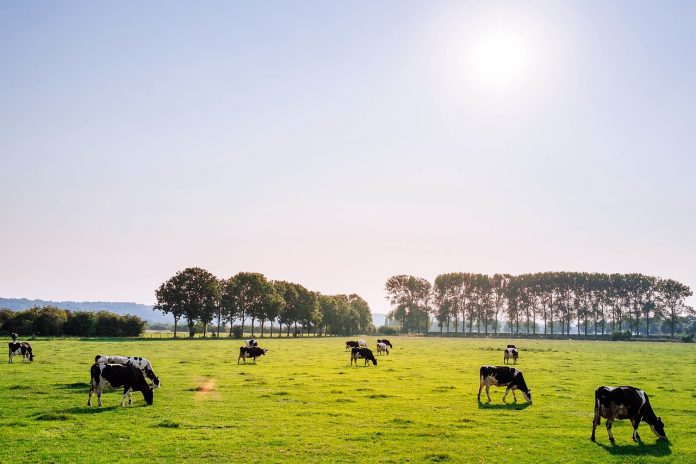Grazing and hay production are the two dominant forms of agriculture in eastern Ohio, according to the U.S. Department of Agriculture Ag Census.
Some farms are strictly hay, but most are a combination of grazing and hay production. This makes sense operationally, as most people understand, whether you are a farmer or not, grass does not grow in the winter.
Often, we hear pasture fields being referred to as forages, which is a term that encompasses all of the beneficial plants in a field. But as far as biomass and stability, grasses are typically the dominant species that makes the most sense to manage for production and quality.
Quality
Before we look at production, it is important to understand the quality of grasses as well. Quality will decrease as maturity of cool season grass progresses to a reproductive stage. This will occur typically in June for cool season grasses in eastern Ohio.
The following grass transition after reproductive status is usually referred to as the “summer slump.” Cool season grasses grow when temperatures are between 40-75 F. When the temperature is outside this window, the grass will go dormant.
This year, we had the warmest April on record, and summer came in rapidly, causing many fields to go into dormancy abruptly for most people. Grass species will play a part in this as some grasses will go into dormancy faster than others.
It is important to realize that summer dormancy will be much more sensitive to overgrazing than winter dormancy. The summer slump will be followed by a smaller vegetative peak of growth in the fall when temperatures come down from 75+ F.
This period is important for root growth and energy storage for the winter months. It is important to make sure that grasses will be healthy enough to perform coming out of summer, so heavy grazing should not be done during this period of dormancy.
It is not uncommon to utilize hay during the summer slump periods so that fall pastures do not get beat up and maintain productivity into the fall. Even though dormant grasses will not be photosynthetic during summer dormancy, heavy grazing can cause increased stress on the grass growing point, the crown and reduce production.
Management
The management piece to successful grazing unfortunately often contradicts animal grazing behavior. Most livestock find leaves more palatable than stems; this is because they have more nutrition. What this leads to is livestock focusing on regrowth and preventing grass or forage establishment.
The way to get around this issue is to fence livestock away from the more desirable and sensitive plant material. Spring will be the fastest growing period and will offer the greatest quantity of forage for the animal.
It is also the time when plants become less palatable as they transition to reproductive and become lignified and stemmy. The farmer/manager must navigate these issues and balance animal nutrition with pasture health.
The seasonal transition in cool season grasses is that rollercoaster that goes from highest spring production to lowest summer production and finishes with a less consistent increase that is important for successful winter vitality.
It is sometimes at this stage when there is grass to graze that we can overgraze and prevent the flow of nutrients from the leaves to the roots. What this leads to is a shallow root system that will be weak and an exposed crown that can be killed off during winter.
One way to increase grass production in the fall is to fertilize late in July and into August when we have passed the hotter drier part of summer. This will lead to an increased vegetative production of grass allowing for some controlled grazing and give you more options so that overgrazing can be better managed. Any grass that is not utilized can be grazed later during the dormant winter.
As far as nitrogen (N) utilization by the cool season grass, fall growth is one of the more efficient ways to maximize N. Most of the nutrient is put into leaves that will benefit both the animal and the plant. It is typical to double your forage production with the addition of 50 units of N per acre during this time. A crude calculation of 50 units of N is ~100 lbs./acre of urea. This approximation also allows for easier estimates in investment.
Understanding the physiology of your grasses can help you make good decisions throughout the growing season. A fertilizer application can be a way to maintain health and productivity of your pastures.
Remember that it can take years of recovery to pasture field that is poorly managed. Those extra few days could possibly cost you 365 more. Always aim for the long-term benefits and you will end up winning the race to the bottom line.













